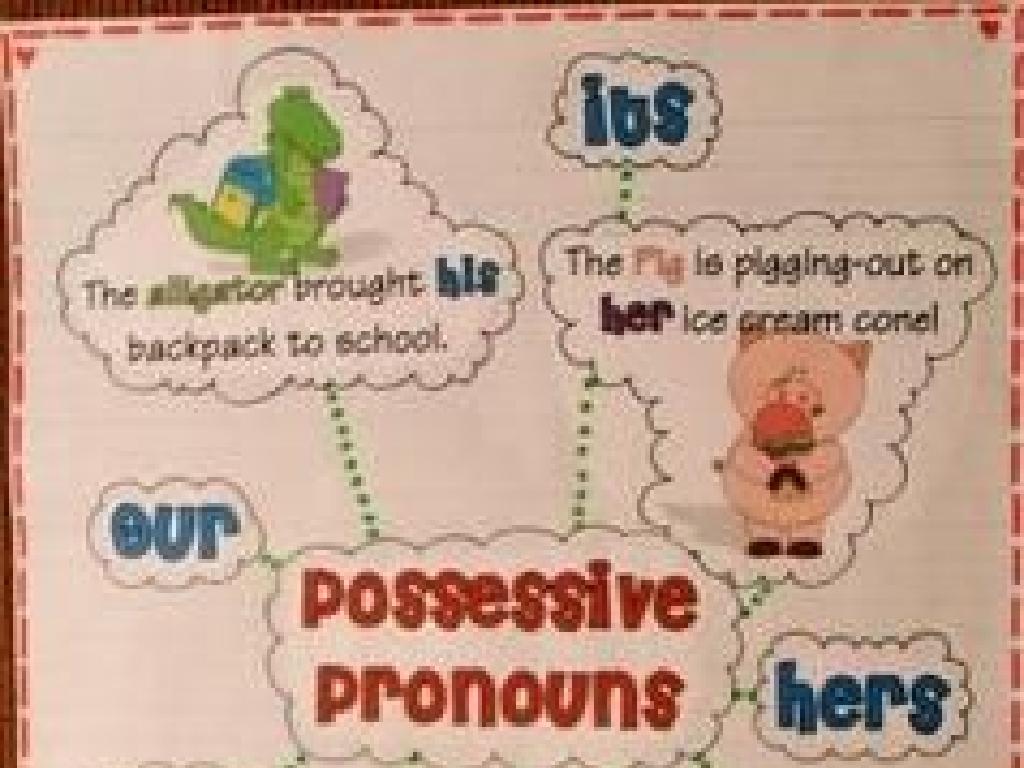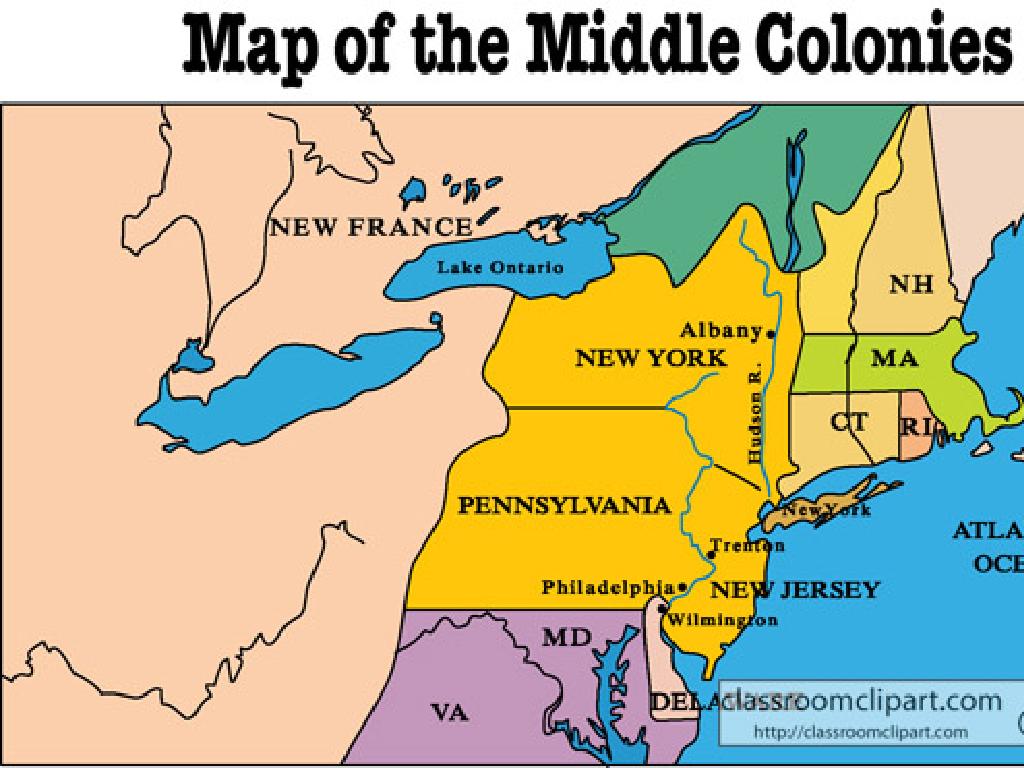Introduction To Adaptations
Subject: Science
Grade: First grade
Topic: Traits
Please LOG IN to download the presentation. Access is available to registered users only.
View More Content
Welcome to Adaptations!
– Animals live in many places
– ‘Adapt’ means to fit in
– Changing to survive in a home
– Daily life adaptations
– Using an umbrella in the rain
– Examples: Camouflage, beaks
– Chameleons change color, birds have different beaks
|
This slide introduces the concept of adaptations to first graders, explaining how animals change to survive in their environments. Start by discussing the variety of places animals live, from jungles to deserts, and how they need to adapt to these homes. Explain ‘adapt’ in simple terms, relating it to changes they make in their own lives, like wearing a coat when it’s cold. Provide everyday examples, such as using an umbrella in the rain, to illustrate adaptations. Highlight animal examples like chameleons changing color to hide from predators or birds having different types of beaks to eat various foods. Encourage the children to think of other examples and share them.
What Are Adaptations?
– Adaptations help living things survive
– Animals have special body parts
– Like ducks have webbed feet for swimming
– Animals behave in helpful ways
– Some birds migrate to stay warm
– Plants adapt to find food and water
– Cactus stores water in its thick stem
|
This slide introduces the concept of adaptations to first graders, explaining that both animals and plants have special features or behaviors that help them live in their environments. For animals, adaptations can be physical, like the webbed feet of ducks that help them swim, or behavioral, like birds migrating to warmer areas during winter. For plants, adaptations might include ways to gather more water and nutrients, such as the thick stem of a cactus that stores water. Encourage the students to think about their favorite animal or plant and discuss what special features it has that help it survive in its home.
Animal Adaptations
– Polar bears’ thick fur
– Keeps them warm in cold habitats
– Fish breathe with gills
– Allows breathing underwater
– Your examples of adaptations
– Why adaptations matter
– Adaptations help animals survive in their homes
|
This slide introduces the concept of adaptations to first graders, using familiar animals as examples. Explain that adaptations are special features that help animals live in their environments. Polar bears have thick fur to stay warm in icy places, and fish have gills that let them breathe in water. Encourage the children to think of other animals and their unique features, prompting them with questions about animals they know and their habitats. Discuss why these adaptations are important for survival, such as finding food, protecting themselves, and coping with the climate. This will help students understand the relationship between an animal’s traits and its home.
Plant Adaptations
– Cacti spines save water
– Spines reduce water loss in hot deserts
– Water lilies float with wide leaves
– Broad leaves spread weight for buoyancy
– Discuss plant adaptations we know
– Think about why these adaptations help
– Adaptations help plants survive in their environments
|
This slide introduces the concept of plant adaptations to first graders, focusing on how different plants have unique features that help them survive in their specific habitats. Cacti have spines that minimize water loss in arid environments, while water lilies have wide leaves that allow them to float and access sunlight on water surfaces. Encourage students to think of plants they are familiar with and discuss their adaptations. Use this opportunity to explain that adaptations are nature’s way of helping plants meet their needs in various environments. Ask guiding questions to help students connect the adaptations to the plants’ survival, such as ‘Why do you think cacti have spines instead of leaves?’ or ‘How do wide leaves help water lilies?’
Why Are Adaptations Important?
– Adaptations help survival
– They help find food & safety
– Like a bear’s sharp claws for hunting
– Adaptations protect from weather
– Like a camel’s hump for desert heat
– Every adaptation has a purpose
|
This slide aims to explain the concept of adaptations to first graders. Adaptations are special features that animals and plants have to live comfortably in their environments. These can be things like sharp claws for bears to help them catch fish or thick fur for polar bears to stay warm in the cold. A camel’s hump stores fat which turns into water and energy, helping it survive in the desert without food or water for a long time. It’s important to convey that every adaptation serves a unique and important role in helping living things meet their needs, like finding food, staying safe, and being able to live in all sorts of places, from hot deserts to cold arctic areas. Encourage the children to think of animals they know and what special features these animals have that help them live in their specific homes.
Let’s Play a Matching Game!
– Match animals to adaptations
– Consider animals’ needs
– What helps animals thrive in their environment?
– Get ready for fun learning
– Think about animals’ homes
– Different homes need different adaptations
|
This interactive slide is designed to engage first-grade students in a matching game where they will connect animals with their corresponding adaptations. The activity will help them understand that animals have specific traits that help them survive in their particular habitats. For example, a polar bear has thick fur for cold climates, while a camel has humps to store fat for desert conditions. Encourage the students to think about the unique features animals have and how these features make it possible for them to live happily in their environments. Prepare a set of animal pictures and their habitats to facilitate the game. Possible activities include matching cards, drawing adaptations, or acting out animal behaviors.
Class Activity: Create Your Own Creature!
– Time to be creative!
– Draw an animal with adaptations
– Does it have long legs to run fast?
– Consider its habitat
– Does it live in the water, land, or sky?
– Think about survival needs
– What does it eat and how does it stay safe?
|
In this activity, students will apply their understanding of adaptations by drawing an imaginary animal with special features that help it survive in its environment. Encourage them to think about the animal’s habitat, diet, and predators. Provide examples like a fish with fins to swim or a camel with humps to store water. This exercise fosters creativity and reinforces the concept of adaptations. Prepare to assist students with ideas and ensure they understand that adaptations are traits that help living things thrive in their specific environments.





